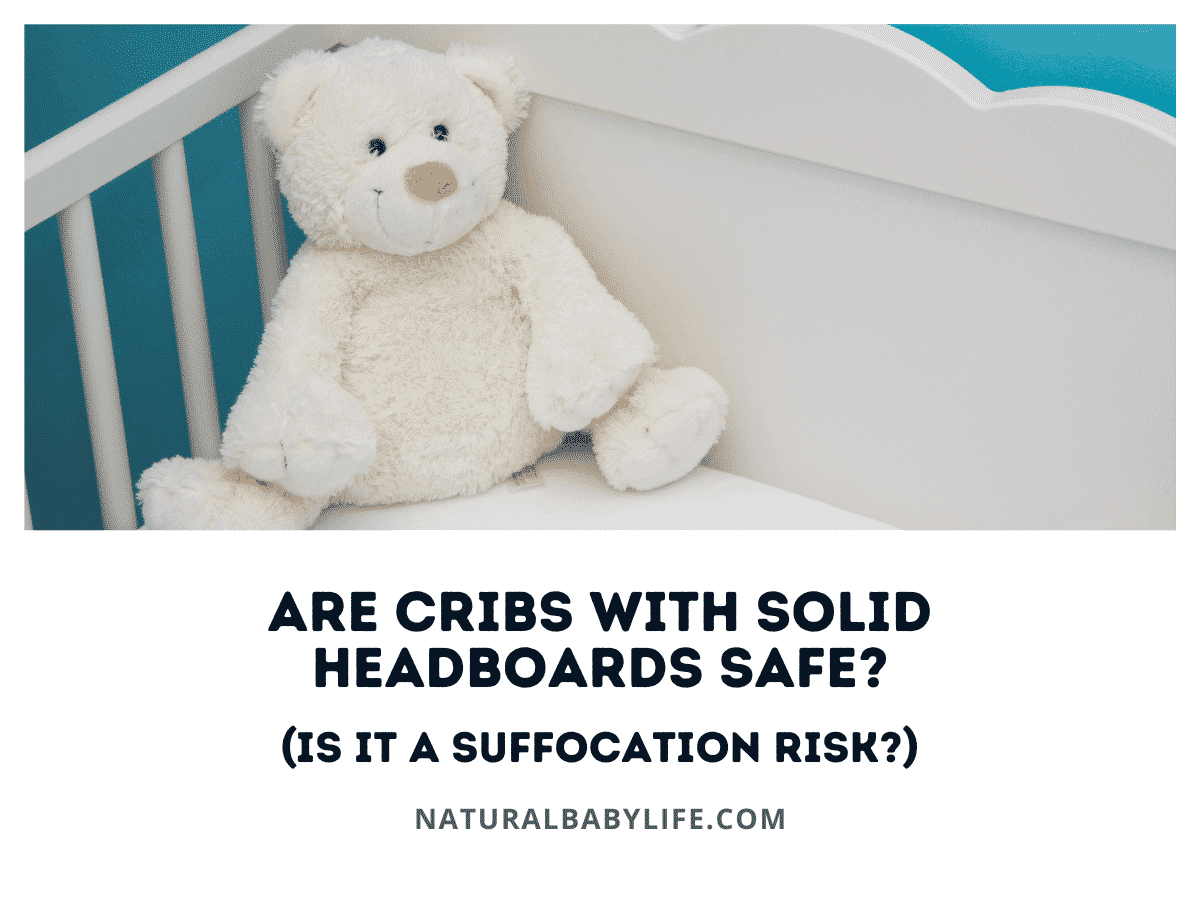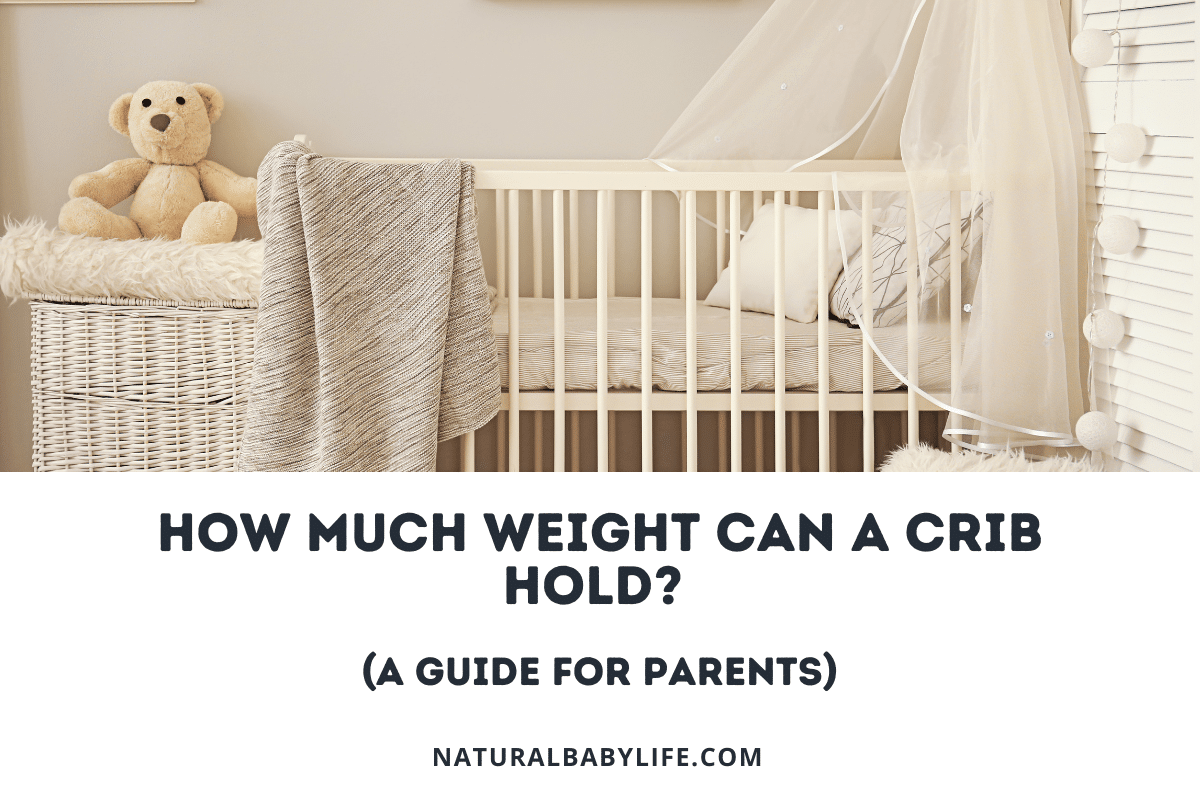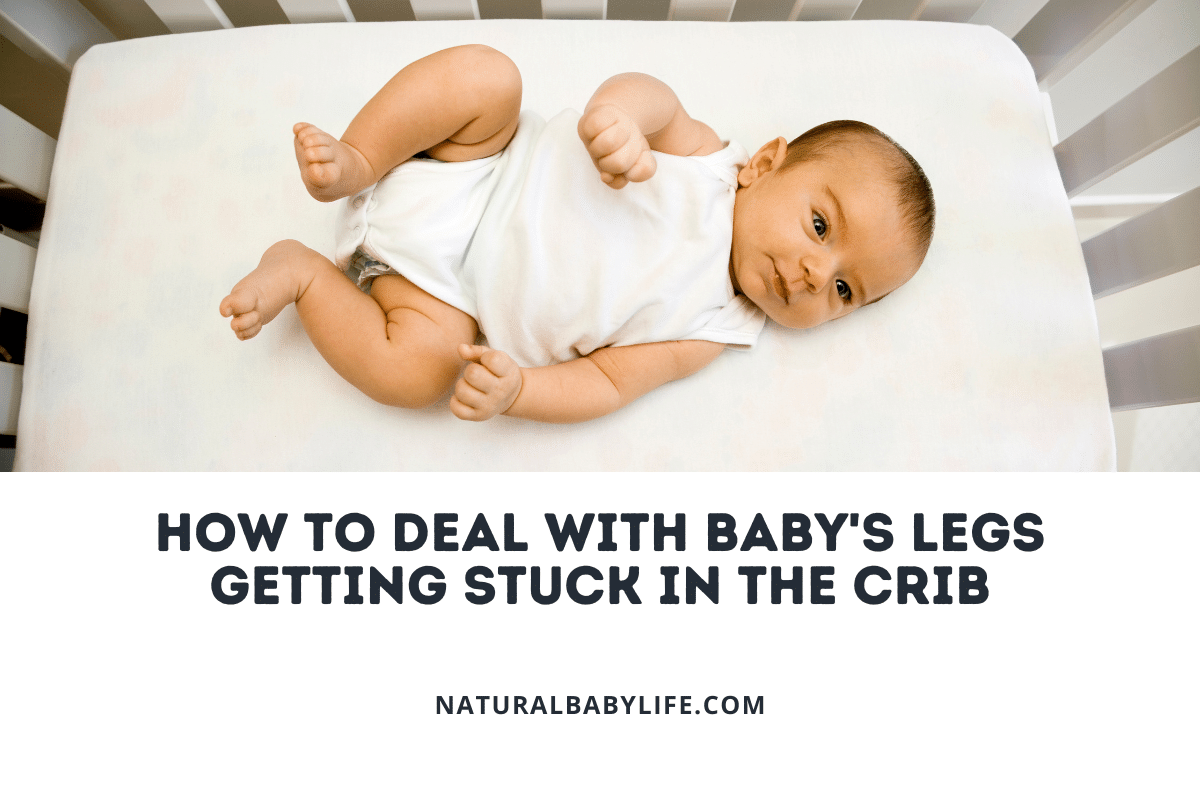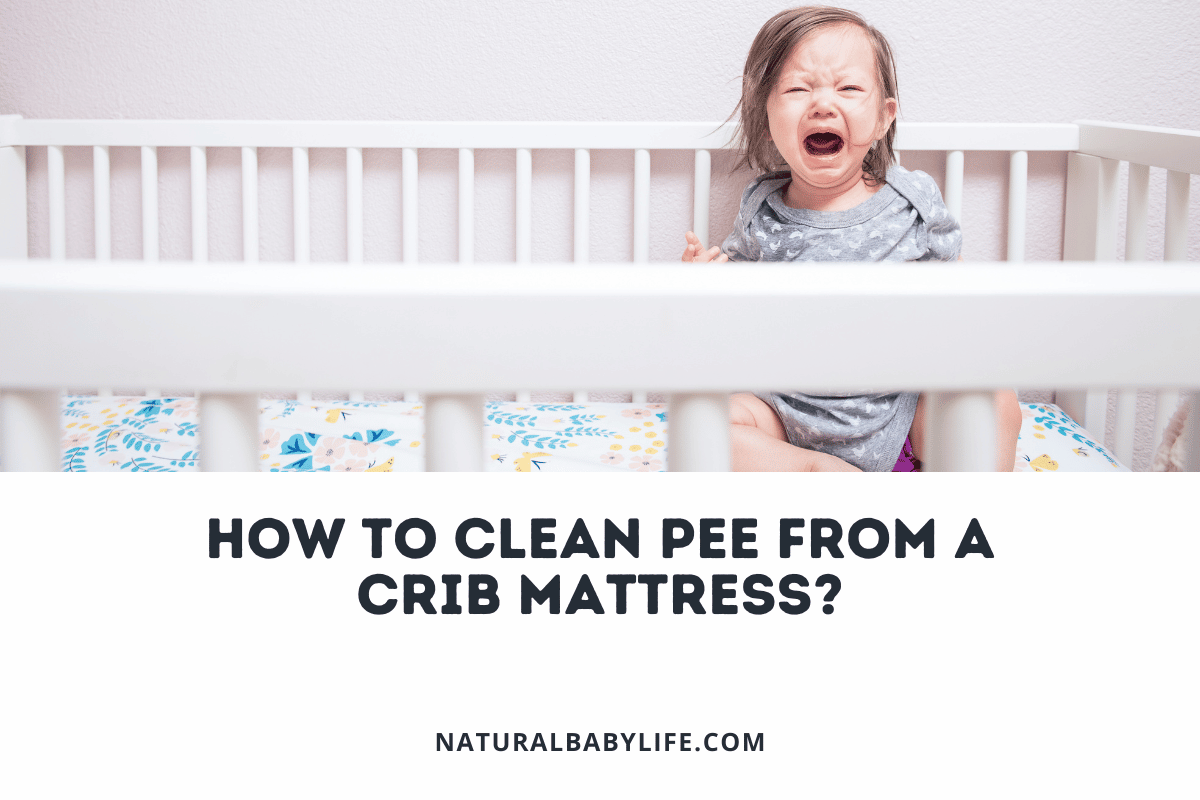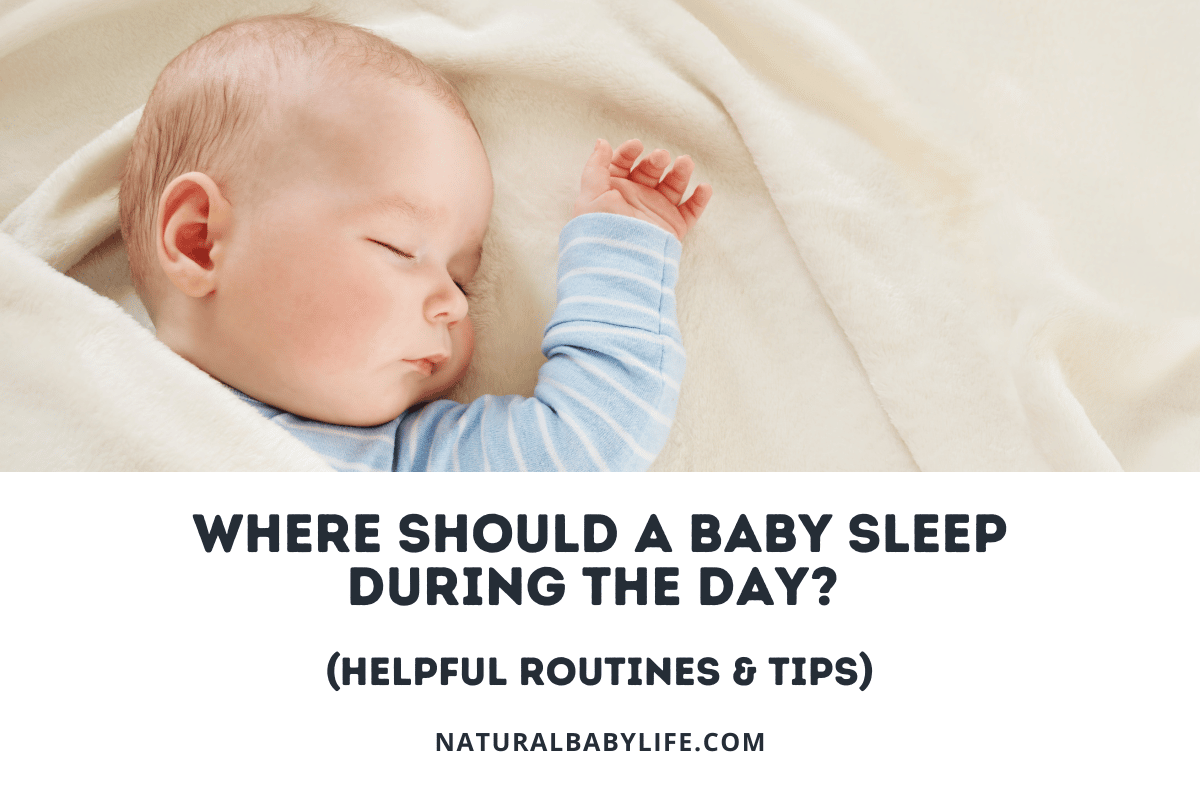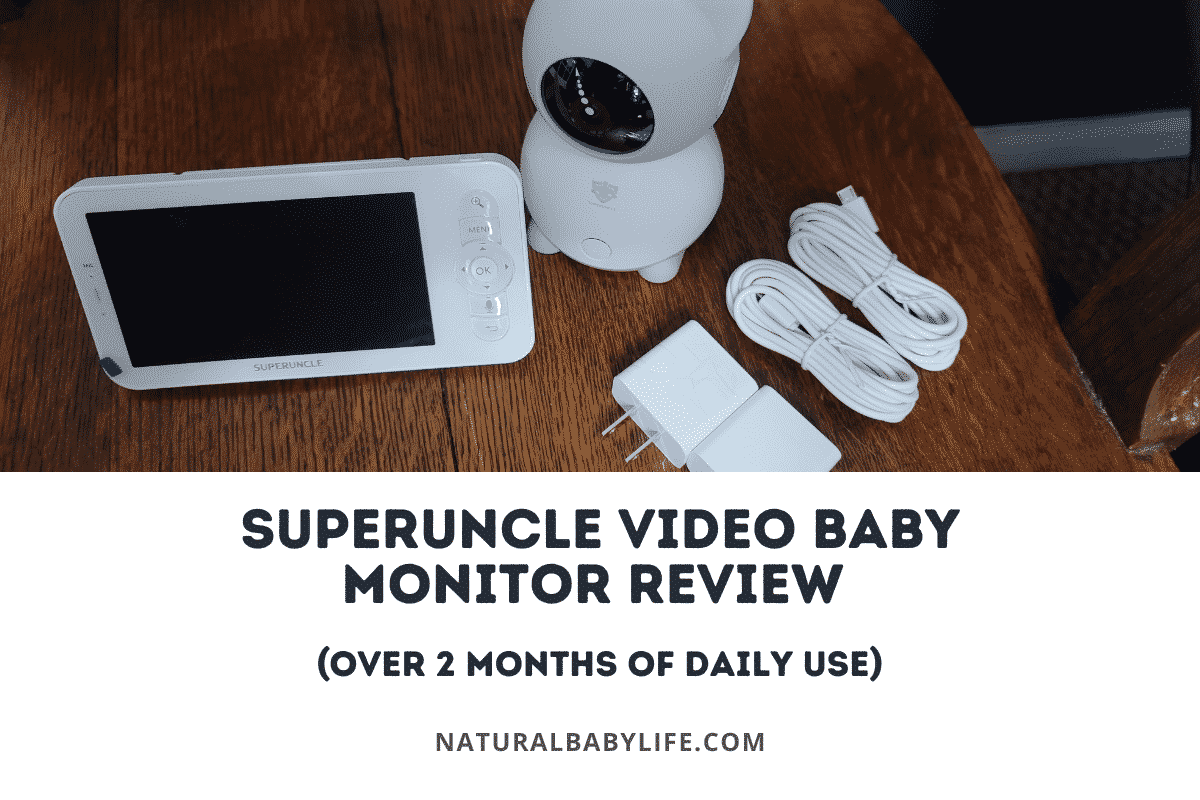One of the most important tasks of parenting is to make sure your baby has a safe place to sleep. Safety guidelines on cribs and bassinets change fairly often, and you may find yourself wondering if that adorable crib you’re looking at is actually safe for your little one.
Cribs with solid headboards or sides are safe for your baby as long as the crib meets current guidelines and you’re following all other safe sleeping practices. Never put your little one to sleep with pillows, heavy blankets, toys, crib bumpers, or other objects that could cause suffocation. On its own, a solid headboard can’t cause suffocation.
How can you be sure your baby’s crib is actually safe? Keep reading to find out!
Table of Contents
Are cribs with solid sides safe?
Cribs with solid sides, headboards, or backs are commonly found for sale.
Because suffocation can be a concern when it comes to your baby’s crib, you might take one look at a solid headboard and worry that it’s not safe for your little one to use. Luckily, cribs with solid sides should be safe for your baby to use, as long as the crib meets current safety standards.
Crib manufacturers are held to high standards of safety on their crib designs, which we’ll discuss in detail later in this article. Safety standards for cribs actually recommend that the footboard and headboard of the bed be solid, because it makes the crib more sturdy and less likely to break.
Solid sides can also offer you some peace of mind: babies like to take advantage of slats in their cribs to drop stuff between them. If you’re using a solid crib, your baby won’t be able to toss stuff out of it (at least until they’re old enough to stand!).
All cribs currently for sale (solid sides or otherwise) are required to meet extensive safety standards to ensure the well-being of your baby. If you’re still worried about using a solid-sided crib, there are still plenty of slatted options available. Just make sure the crib you’re looking at meets the recommended safety standards, and you should be good to go!
How do I know if my crib is safe?
Newer cribs are designed according to strict crib safety standards that help protect your baby. If you’ve inherited an older crib from family members, though, you may want to see if the crib will be safe for your little one to use.
To ensure your used or inherited crib is safe, you should consider its age, the type of paint or stain used, the size of the gap between any slats, the size of the mattress required, the type of hardware, and any decorative elements that may be lovely but ultimately dangerous.
Age
If you can, try to double-check the age of the crib before using it. The CPSC (Consumer Product Safety Commission) imposed new guidelines for crib safety in 2011. If the crib you’re using was made before that date, it probably isn’t as safe as some newer models.
Paint
If your crib is painted, carefully check the paint quality and condition before use.
Natural or water-based paints are non-toxic, and safe to be used on your baby’s crib. Unfortunately, many types of paint that are commercially available contain “Volatile Organic Compounds” (VOCs) which can cause health problems with excessive exposure.
Cribs painted before 1978 might even have traces of lead, which was a common ingredient in paint before that time. Additionally, if the paint is chipped or cracked, your baby might accidentally swallow some flakes of paint.
Slat and Gap Width
Experts recommend avoiding cribs with slats or gaps larger than the width of a soda can. Spaces that are too big can pose a suffocation risk or cause your little one to get their arms, legs, or even head stuck.
Crib Mattress
The mattress you use should be designed to fit the crib. There shouldn’t be any gaps bigger than about two fingers between the sides of the crib and mattress. The sheet over the mattress should be fitted, and rest snugly on the mattress without slipping.
Hardware
If you’re inheriting a crib, make sure that you have all the hardware (screws, bolts, etc.) for proper assembly. Make sure any bolts and screws that are already in place are tightened firmly.
Headboard and Footboard
There shouldn’t be any cutouts or dangerous design details in the footboard or headboard of the crib. If your crib has slats in the headboard and footboard, make sure they aren’t too far apart.
Crib safety standards
The Consumer Product Safety Commission (CPSC) published a set of crib safety standards in 2011.
All crib manufacturers are required by law to follow the standards and comply with any updates the CPSC makes. These crib standards are comprehensive and cover every part of the crib from the mattress support system to the spacing of components within the crib.
Cribs that are sold within the United States are required to adhere to the CPSC standards in their crib design. Because the standards can be updated and further testing done on cribs, it’s important to keep an eye out for open recalls on any crib you purchase.
Luckily, the CPSC website has a nifty search engine you can use to look up any recall information.
Are solid headboards/backs/sides on cribs a suffocation risk?
Solid sides on a crib don’t pose a suffocation hazard on their own.
Flat, firm surfaces are actually safer for a newborn baby to sleep on than nearly any other texture or material. That’s because hard surfaces such as wood can’t conform to the contours of a baby’s face, so even if your newborn presses their face right up against the solid surface, some air should still be able to reach your little one’s nose or mouth.
Solid sides are usually only a suffocation risk from outside of the crib: small children and sometimes babies can become trapped between the crib and another object, which can lead to suffocation. If a crib mattress is too small for the crib, it’s also possible for a baby to roll between the side of the crib and the mattress and become wedged in the gap. In both of the above cases, cribs with slats can be just as much a suffocation risk as cribs with solid sides.
Whether your crib has solid or slatted sides, it’s important to keep the crib free of any soft and squishy items. Blankets, pillows, stuffed animals, and crib bumpers can all present a suffocation risk to your child.
Are bumpers safe for cribs with solid sides?
As of 2007, crib bumpers have been deemed a suffocation risk by the American Academy of Pediatrics (AAP).
Parents use crib bumpers to help their babies avoid hard contact with the sides of the crib, but the softness of the bumpers is exactly what can make them so dangerous. The fluffy material acts a lot like a pillow or extra blanket: a newborn that can’t turn its head can become trapped against the soft material and suffocate. Crib bumpers aren’t safe for solid-sided or slatted cribs.
Although it’s become pretty standard knowledge that crib bumpers aren’t safe, many companies continue to sell them. A more recent trend has involved crib ‘liners’ – pieces of fabric that can weave between crib slats and supposedly have the ability to keep babies from getting their feet or hands stuck in the gaps of the crib.
These crib liners are marketed as the newer, safer version of crib bumpers, but they can still present a suffocation risk to babies. If the liners are made of a heavy fabric, a baby can still press their face against the surface and suffocate. Additionally, loose liners can cause strangulation, regardless of the type of fabric they’re made of.
Crib liners can be particularly dangerous with solid-sided cribs, as the liners are designed to weave through slats and not just sit in front of solid wood. Using a crib liner against the solid sides of a crib can leave the fabric loose, and make it easy for a baby to pull off. Loose fabric in a crib is never a good idea, so if your crib has solid sides, you should skip both bumpers and liners altogether.
Can solid headboards/backs/sides on cribs cause SIDS?
There currently isn’t any evidence that suggests solid-sided cribs cause SIDS. The AAP has emphasized creating a safe sleeping environment in order to minimize the risk of SIDS, but their recommendations have little to do with the style of crib you choose to use.
As long as your crib follows the safety guidelines required in crib design and doesn’t have any open recalls, it shouldn’t matter if the crib has solid or slatted sides. Far more important is that you avoid any soft, extra items in your baby’s crib in order to reduce the risk of SIDS.

